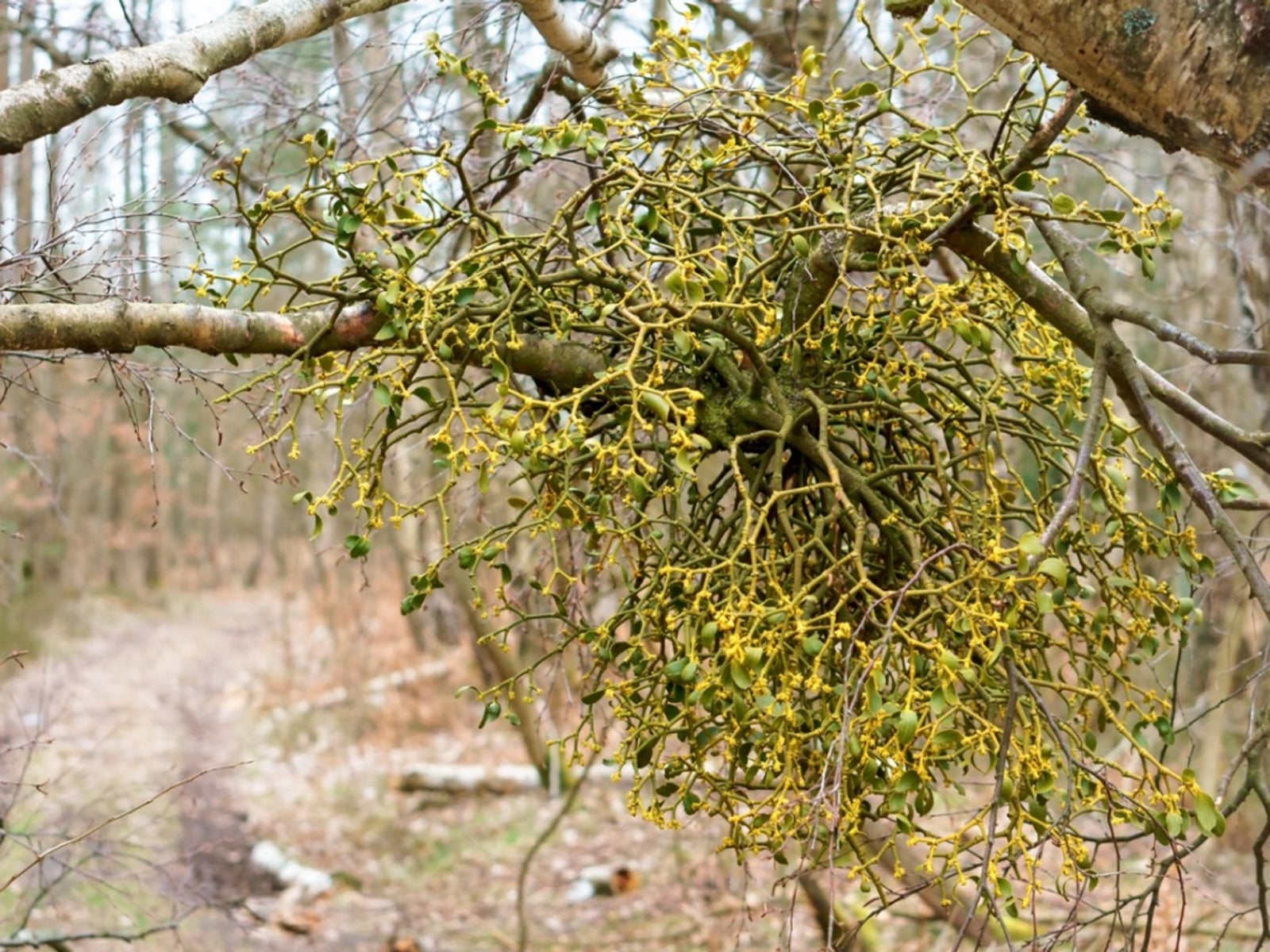What Are Parasitic Plants: Learn About Parasitic Plant Damage


At Christmastime, one of our warm and fuzzy traditions is to kiss under the mistletoe. Did you know mistletoe is actually a parasite, one that has the potential to be a vicious tree-killing one? That’s right-- just a little factoid to keep in your hip pocket if you need a great excuse for ducking out of a holiday smooch. Mistletoe actually is one of many different types of parasitic plants out there. Given that there are over 4,000 species of parasitic plants in existence, you will need some parasitic plant info to help you make sense of it all.
What are Parasitic Plants?
What are parasitic plants? The simple explanation is that they are heterotrophic, meaning that they are plants that rely on other plants in whole, or in part, for their water and nutrition. They are able to siphon these resources from another plant because they possess modified roots, called haustoria, which penetrate undetected into the pipeline, or vascular system, of their host. I liken it to a computer virus latching onto your computer system undetected, siphoning and draining your resources.
Types of Parasitic Plants
There are many different types of parasitic plants in existence. The classification of a parasitic plant is essentially determined by giving it a litmus test across three different sets of criteria. The first set of criteria determines whether the completion of a parasitic plant’s life cycle is solely dependent on its association with a host plant. If it is, the plant is considered an obligate parasite. If the plant has the potential to survive independent of a host, it is known as a facultative parasite. The second set of criteria assesses the type of attachment the parasitic plant has to its host. If it attaches to a host’s root, for instance, it is a root parasite. If it attaches to a host’s stem, it is, you guessed it, a stem parasite. The third set of criteria classifies parasitic plants according to their ability to produce their own chlorophyll. Parasitic plants are considered holoparasitic if they produce no chlorophyll and rely exclusively on the host plant for nutrition. These plants are characteristically pale or yellow in appearance. Parasitic plants which do produce their own chlorophyll (and hence are greener in color), gleaning some nutrition from a host plant, are identified as hemiparasitic. Mistletoe, so lovingly described in this article’s opener, is an obligate stem hemiparasite.
Parasitic Plant Damage
It is important that we are aware of this parasitic plant info because parasitic plant damage can have serious repercussions. The stunted growth and death that afflict the parasites’ host plants can happen on a massive scale and threaten vital food crops or even disrupt the delicate balance in ecosystems and all who exist within it.
Gardening tips, videos, info and more delivered right to your inbox!
Sign up for the Gardening Know How newsletter today and receive a free copy of our e-book "How to Grow Delicious Tomatoes".

Shelley Pierce was a writer for Gardening Know How, contributing to hundreds of articles for the site.
-
 Try The Trend – Turn Any Bed Into A Keyhole Garden With This Clever In-Ground Composter
Try The Trend – Turn Any Bed Into A Keyhole Garden With This Clever In-Ground ComposterKeyhole gardening is an efficient and sustainable practice that saves space. Get started on this DIY project quickly and easily with an in-ground composter.
By Bonnie L. Grant
-
 4 Superfast Composting Methods: Turn Waste Into Garden Gold In 30 Days Or Less
4 Superfast Composting Methods: Turn Waste Into Garden Gold In 30 Days Or LessTry the fastest composting methods to turbocharge your pile and transform kitchen scraps and garden waste into finished compost in just a few weeks.
By Mary Ellen Ellis